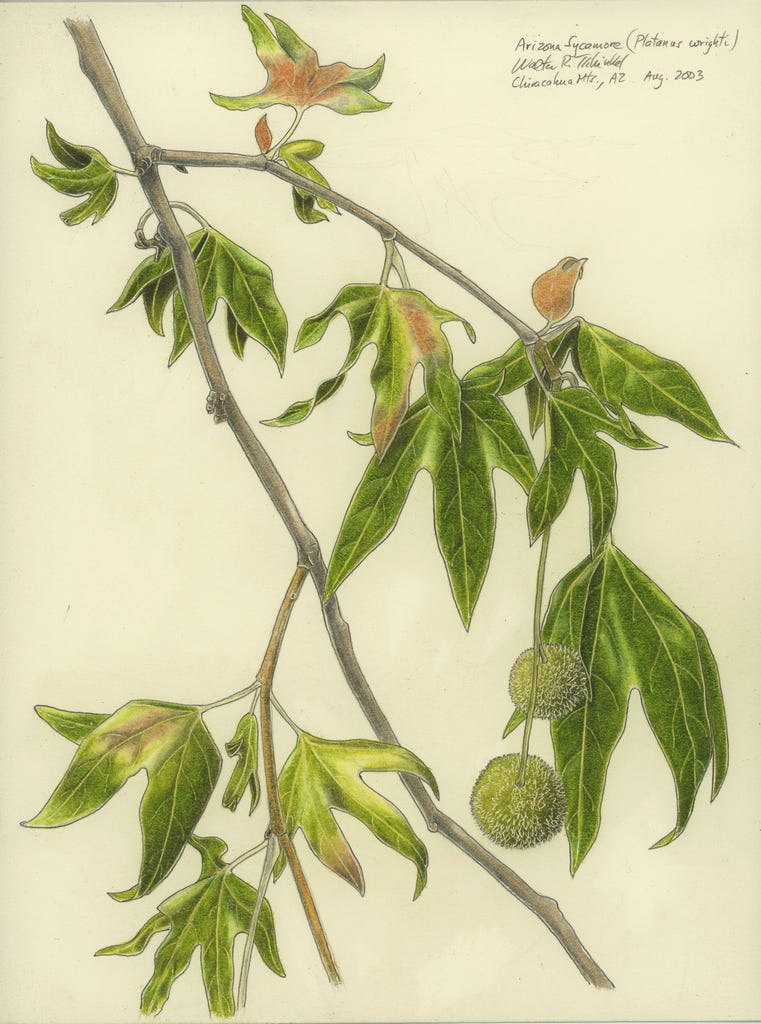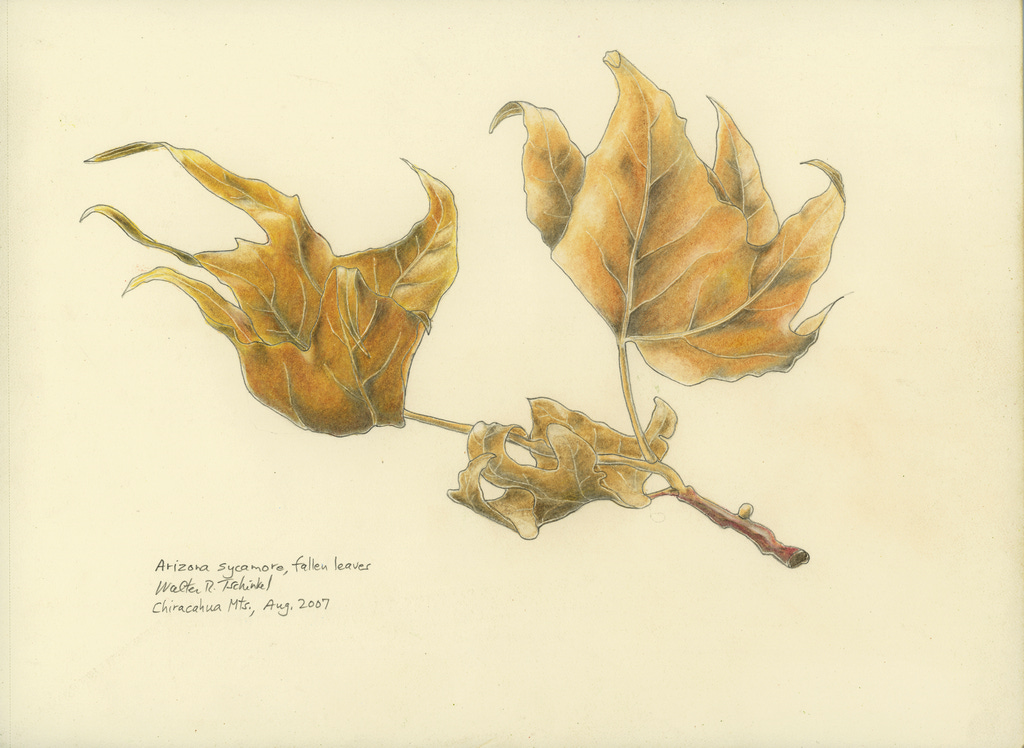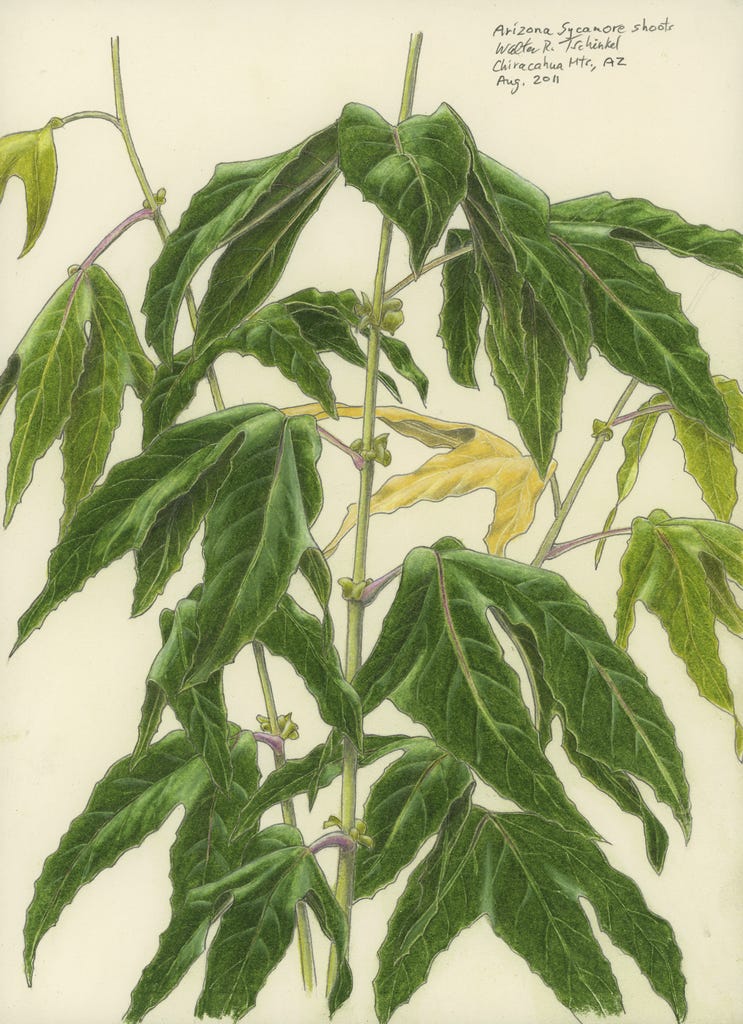There is something magical about water in the desert, a magic that is expressed most reliably in the cool depths of a well-watered canyon in southeastern Arizona. The surrounding mountain slopes may sizzle in the sun, sending heated columns of air into the heavens, but in the shade of a gnarled sycamore rustling in the breeze, life is good. As the sun heats the mountains above, cooling breezes blow up the canyon, while at night, the breezes reverse because the mountains also cool fast. In the trickling stream, caddis fly larvae collect tiny pebbles or cut pieces of fallen leaves to build their portable houses, snails scrape diatoms from rocks, and whirligig beetles do their crazy bumper-car dances on the water surface. Sycamores need to have their feet in damp soil, limiting their ghostly white trunks to canyon bottoms. Their papery fallen leaves crackle underfoot, and balls of seeds hang like round light bulbs on cords, waiting to break up into millions of tufted seeds.
Rain in this part of the world usually comes as thunderstorms, sometimes dumping a month's worth of water in a few minutes. Then the trickling stream becomes a grey, muddy torrent of immense power, rolling rocks the size of bathtubs, wresting trees from the banks, cutting new channels and depositing half a mountainside of soil, rock, and debris on the alluvial apron miles below the canyon mouth. The western landscape may remain unchanged for centuries, and then be radically altered by a single, catastrophic flood. The dice are rolled every summer, and sometimes they come up snake-eyes.
Standing in the shade of a sycamore on a quiet, sunny day, it is hard to imagine the size, speed, and power of such flash floods, but an occasional observation can indirectly help bring it to life. Where Guadalupe Canyon issues forth from the Peloncillo Mountains, it is a hundred meters wide, with sloping banks and a forest of large, stout-trunked veteran sycamores in the sandy, gravelly stream bed. A single-stranded barbed wire fence that runs diagonally across the dry stream bed marks the border between the U.S. and Mexico (or did in the 1970s). Debris from numerous floods was piled behind most of the trees and hung in shrubs. As we scoured the ground and flipped debris to collect tenebrionid beetles, we were troubled by a breath-stopping, pervasive odor of carrion. Search as we might, we could find no source of the odor, either large or small, until I happened to look up--- there, wedged into the fork of a sycamore fifteen feet above the ground, more than twice as high as I could reach, was the rotting body of a cow.






Your essays always bring surprises and insights, and this one includes some wonderful poetic riffs. I am sure you have more skills and talents up your sleeves than I can imagine. Thanks for sharing your gifts!
you don't have one of your prize-winning drawings of the cow?????